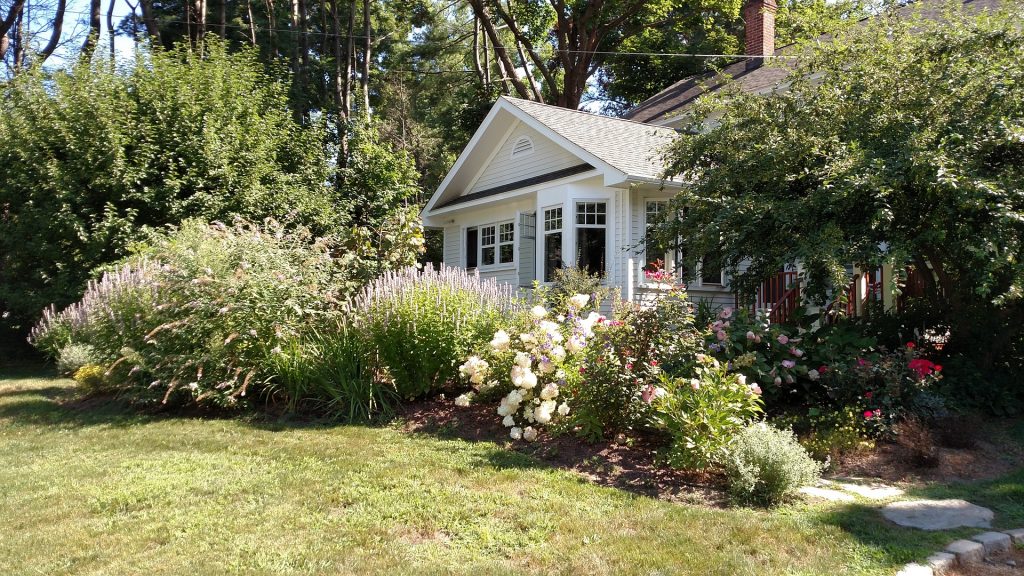
Remaining in a home that is comfortable and friendly – even if it is multiple stories and needs a few improvements – is likely the best choice for people as they grow older and choose to age in place
At the risk of being too declarative, this post is titled “almost always” when it likely is “always” that it’s cheaper to continue living in one’s present home and age in place than it is to market that home and move elsewhere. Of course, there can be exceptions, and people can have extravagant renovations done for their existing homes, but for our purposes, staying in the current home is less expensive than moving. That means moving to another home in the community, moving to another city, moving in with family, or moving into some type of congregate living or group care.
There are so many improvements that can be made to a home today – by the owner and certainly by us as aging in place specialists – that can accommodate the changing needs of the owners and others living in their home. The modifications can be quite simple and relatively inexpensive such as changing door handles or cabinet and drawer pulls or replacing light bulbs or fixtures. It can involve changing flooring pr making other safety improvements. It can be more extensive such as widening hallways or doorways – items typically not down by the owners.
Because the occupants of a home – the people slated to become our clients – vary so much in their physical abilities, there really isn’t a single approach we can take. We can do all of the work or some of it. They may enjoy doing pieces of the project or they may lack the physical ability to help. In fact, a very common improvement that is made for aging in place purposes is the installation of grab bars, Depending on how the home is constructed and the ability of the owner or the contractor to find wood blocking or studs to anchor the devices, the project can be rather straightforward. Of course, it can be more complicated also.
Grab bars are not a singular effort. We can install them (or the client may wish to get involved, depending on their skill and ability level) at the entrance to the tub or shower. They can be installed inside the tub or shower area for additional support and peace of mind. However, they don’t need to be limited to just the bathroom.
Grab bars also are effective and appropriate to be installed at the front door, especially when there is a small stoop or a series of step to be climbed to reach the stoop, landing, or porch. The grab bar by the side of the door allows anyone to maintain their balance and keep from falling. Grab bars work in the same way at the doorway from the garage into the home whenever there is a step (or more than one).
As far as mobility concerns, homes can be adapted with many different types of equipment, solutions, and devices. Grab bars or rails can be added along a hallway, dining room, bedroom, or any other area of the home where the client needs additional support for balance or to walk without additional assistance. Of course, there are more attractive solutions than just wooden or metal rails, but these can be added easily.
For clients requiring vertical mobility assistance, ramps can be added (a very common renovation), a vertical platform lift, a stair glide (also known as a chair lift, stair lift, or chair glide) can be installed to travel one flight of stairs or even multiple flights with a curved railing bending around the landing. While more expensive, elevators of various types, drive systems, capacities, and sizes can be installed. Additionally, the quality and condition of sidewalks and access outside the home can be addressed.
With home health, visiting caregivers, or care that can be live-in, clients and their loved ones now have extensive options for remaining at home when their health needs require more supervision and attention.
The key thing to remember is that most renovations are going to be less money – even though they may carry a significant price tag at the time – than going to a facility or institution. Plus, the renovation is a one-time expense versus an ongoing monthly or annual fee that can be two-three times more than even a generous remodel. The second year, the money that would be spent to live elsewhere would be offset by the improvements that already had been made.
Moving into another home or even moving in with family members means that something has to be done to get the present home ready to sell (unless it is a rental) and to pack up everything to have it loaded onto a moving truck and transported. There is a lot that likely should be discarded, sold (if it can) or donated to thrift stores rather than moving it. This is money spent in the form of time or in the hiring of an organizational consultant. A storage locker may need to be rented for those items that just can’t be let go.
There are reasons for leaving the present home and making other arrangements, but saving money should not be one of them. It is much less expensive to remain.
